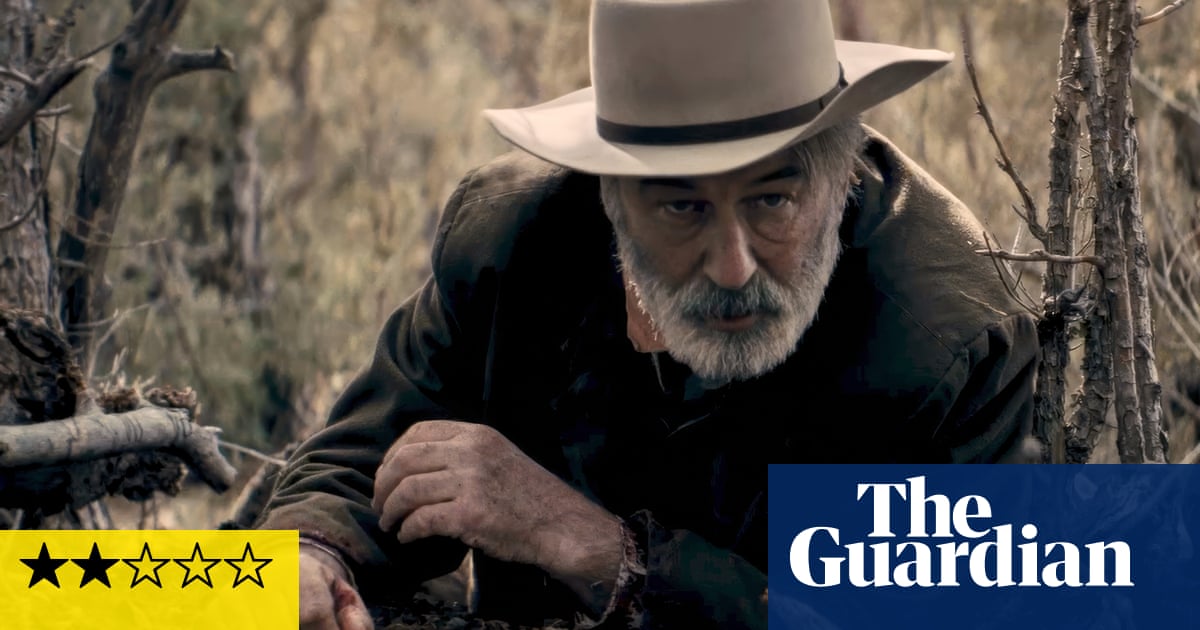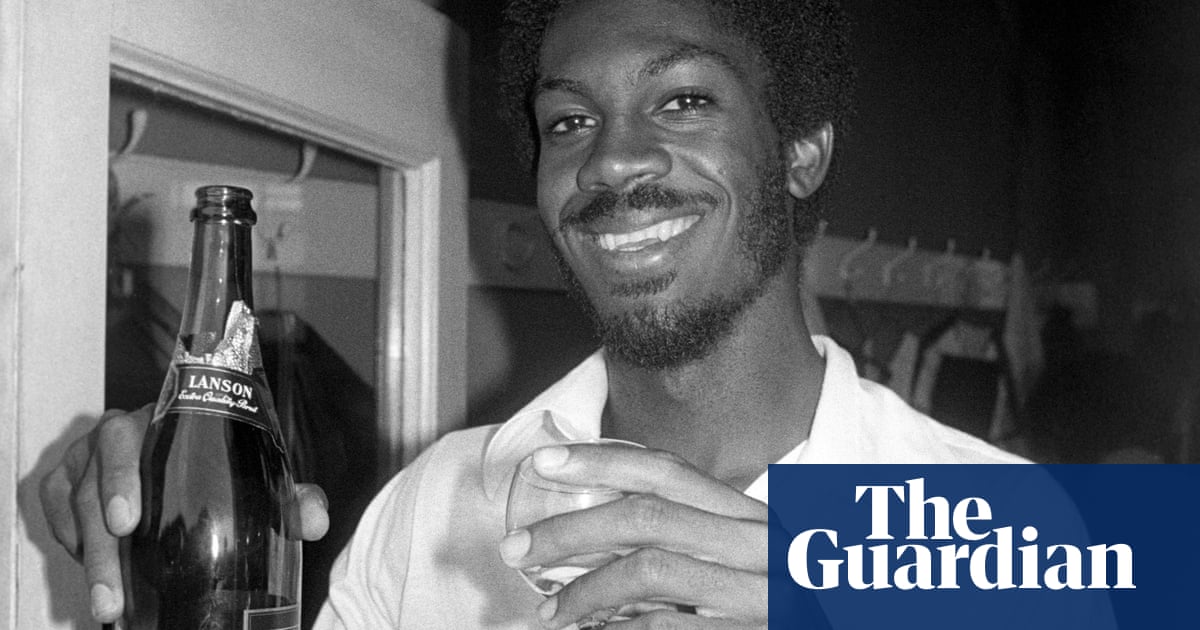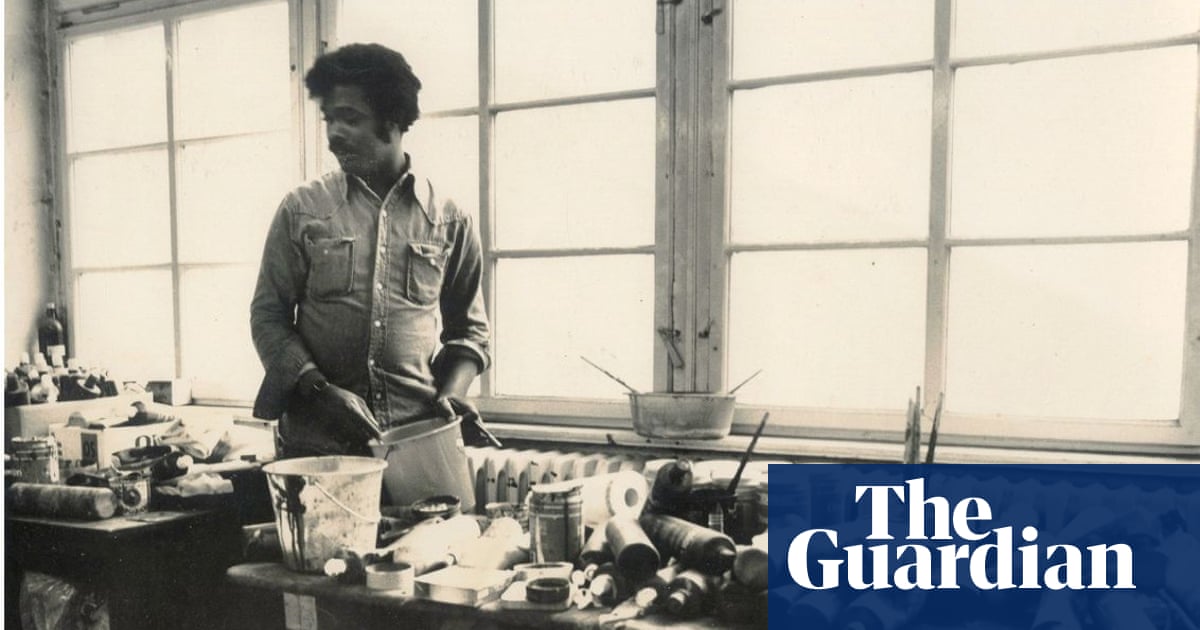Beginning in 2001, the Austrian anthropologist Bernd Brabec de Mori spent six years living in the western Amazon. He first arrived as a backpacker, returned to do a master’s thesis on ayahuasca songs, and eventually did a PhD on the music of eight Indigenous peoples in the region. Along the way, he married a woman of the local Shipibo tribe and settled down.
“I did not have a lot of money,” he told me, “so I had to make my living there.” He became a teacher. He built a house. He and his wife had children. That rare experience of joining the community, he said, forced him to realise that many of the assumptions he had picked up as an anthropologist were wrong.
Like most outsiders, Brabec de Mori arrived in Peru thinking that ayahuasca had been used in the western Amazon for thousands of years. This is the standard narrative; look up resources on ayahuasca, and you’re bound to run into it. “Ayahuasca has been used in the Peruvian Amazon for millennia, long before the Spanish came to Peru, before the Incan empire was formed, before history,” states the website of the Ayahuasca Foundation, an organisation founded by a US citizen that offers ayahuasca retreats.
Yet with time, Brabec de Mori came to see just how flimsy this narrative was. He discovered “a double discourse, which happens in all societies where there is tourism”, he said. “People start to tell the tourists – and I found that most Shipibo people did not distinguish tourists from researchers – the stories they think are interesting for them and not what they really live with.”
His research showed just how large the discrepancy was. He discovered that, in their traditional stories about ayahuasca’s origins, many Shipibo-Konibo people said the brew came from the Kukama, one of the first peoples to be missionised and resettled during the Spanish conquest. Other peoples from the region remembered adopting it in the last 50 years. When he examined old reports of travellers, Brabec de Mori found that he could connect the historic diffusion of ayahuasca to the movements of missionaries and the spread of the rubber industry through the western Amazon.
Then there was the linguistic evidence. Peoples in the Peruvian Amazon speak a dazzling variety of languages, but their words for ayahuasca and related activities are notably alike. The same goes for their music: lullabies, love songs and festive songs are varied, yet ayahuasca songs are very similar and often sung in non-Amazonian languages, like Quechua or Spanish. These patterns led him to conclude that ayahuasca hasn’t been in the western Amazon for millennia. Rather, it seems to have arrived and spread much more recently.
Based on this and other evidence, Brabec de Mori argues that ayahuasca diffused through the Peruvian Amazon in the past 300 years. It is likely older among Tukanoan peoples further north, who, he suspects, transmitted the practice to populations missionised early in the lowlands. Yet in the regions most frequented by tourists, it seems to be a relative novelty. Brabec de Mori isn’t the first to make the argument – the anthropologist Peter Gow proposed something similar in 1994 – but he, more than anyone else, has found the anthropological data to support it.
Brabec de Mori’s findings represent one of many cracks in the stories we tell about the history of psychedelics. As these substances become the mainstream, so do narratives about their role in human societies, narratives that often bind them to shamanism. Just look at the media coverage. In 2020, a journalist for the Washington Post wrote that consciousness-altering substances “have been used by Indigenous cultures for physical and psychological healing for thousands of years”. Michael Pollan endorsed a similar narrative throughout his bestselling 2018 book, How to Change Your Mind, writing that “elements of shamanism might have a role to play in psychedelic therapy – as indeed it has probably done for several thousand years”.
These quotes all subscribe to what I call the global archaic psychedelic shamanism (Gaps) hypothesis. It consists of three claims. First, that psychedelics have long been widespread. Second, that use of psychedelics goes back to the ancient past. Third, that psychedelics have long been used by shamans for therapeutic healing.
Like so many of the stories we tell about human history, the Gaps hypothesis is rooted in glimmers of truth. Yet much of what passes as psychedelic history has been distorted by a seductive mixture of flimsy archaeological evidence, outdated anthropological approaches and economically expedient ideology. “It’s a romantic image that Indigenous people have been using everything they do for thousands of years,” Brabec de Mori said. “If we change the picture, it’s kind of unromantic, and it seems that people like romanticism.”
In June 1955, the vice-president of public relations at JP Morgan arrived in a remote village in the Mexican highlands. He was accompanied by Allan Richardson, a photographer and teacher at an elite girls’ school in Manhattan. They had come to eat fungus.
The PR man, Robert Gordon Wasson, was a mycophile. For decades, he and his wife Valentina Pavlovna Wasson had studied humanity’s relationship with mushrooms; Mexico would be the most promising place to explore it. Four centuries earlier, Spanish chroniclers had recorded how the Aztecs consumed a powerful psychoactive substance called teonanacatl, or “flesh of the gods”. Botanists and anthropologists had bickered over its identity until the 1920s and 1930s, when they discovered that communities in the Oaxacan mountains swallowed psychotropic mushrooms in night-time ceremonies.

Wasson learned about the ceremonies in 1952. The next year, he and Valentina travelled to the town of Huautla de Jiménez, where they observed, but did not participate in, a mushroom ritual. He returned to Mexico again in 1954 and collected ethnographic data. In 1955, he travelled down a third time, this time with his photographer friend, and was lucky enough to meet a Mazatec shaman named María Sabina. Valentina and their daughter joined a day or two later. María Sabina “had presence”, Wasson later wrote. He and Valentina considered her “a woman of rare moral and spiritual power, dedicated in her vocation”. He met her through a local town official under the pretence of determining the health of his son Peter.
It was the ideal introduction. Not only had she spent her life exploring the psychic worlds accessed through mushrooms, but she was willing to let the foreigners try them, too. Wasson wrote up his experience for Life magazine in an article headlined Seeking the Magic Mushroom. Over two nights, he ate mushrooms under María Sabina’s guidance. When Valentina and their 18-year-old daughter arrived, he gave them batches to enjoy as well.
Published in the issue of 13 May 1957, the article popularised the term “magic mushrooms” and introduced millions of westerners to the fungi’s mind-melding effects. Six days later, Valentina told her story in the Week, a magazine included in 37 newspapers and circulated to 14 million readers.
The impacts of the accounts were immediate and far-reaching. They sparked a surge of interest in Indigenous practices and the spiritual and therapeutic applications of hallucinogens. For many readers, the tales of otherworldly visions – of camel caravans, resplendent palaces, a mythological beast in a chariot and the 18th-century court of Louis XV, to name a few – promised gateways to new realms. Writers, academics and everyday adventurers started to make pilgrimages to Mexico, eager to taste the flesh of the gods.
The Wassons helped establish two tenets of the Gaps hypothesis: the ancientness of psychedelic use and its ubiquity. After decades spent studying mushrooms, Wasson wrote, he and Valentina found that peoples everywhere, from “the Arabs of the desert” to “the Māori of New Zealand”, regarded mushrooms as supernaturally powerful. This discovery led them to “hazard a bold surmise: was it not probable that, long ago, long before the beginnings of written history, our ancestors had worshipped a divine mushroom?”
Like a fungal mycelium colonising new terrain, the threads of the Gaps hypothesis had taken root.
In the decades since the Wassons’ articles, assertions of widespread archaic psychedelic use have diversified. They’ve inspired theories that religion broadly and Christianity, in particular, began with psychedelics or other hallucinogens. The American mystic and psychonaut Terence McKenna proposed that human cognitive evolution was catalysed by a prehistoric psychedelic and that some of our modern issues, including myopia, might reflect our alienation from regular psychedelic use. With the rise of two industries, psychedelic tourism and clinical medicinal use, these stories have become commonplace mantras, often tinged with a therapeutic flair.
It makes sense why these claims are so popular. As psychedelics prove effective for treating disorders like addiction and anxiety, scientists and enthusiasts push for their broader societal acceptance. Connecting psychedelics – and particularly, psychedelic therapy – to ancient worldwide traditions makes them, according to historian Erika Dyck, “more natural, more wholesome, perhaps more spiritual”.
But is there any truth to these stories? In 2018, I met a man who set out to answer that question. Martin Fortier was a young anthropologist, philosopher and cognitive scientist based at the École Normale Supérieure in Paris. Like Brabec de Mori, he worked with Shipibo-Konibo communities in the Peruvian Amazon. His interests were wide-ranging, but the project I found most exciting was a database he called Huthac, or “Hallucinogenic Use Through History and Across Cultures”. It was, he said, “the first academic source exhaustively documenting hallucinogenic use”.
It was a gloriously ambitious undertaking, meant to include more than a thousand cultures. To build it, Fortier scoured hundreds of sources, including academic books, historical chronicles, and the diaries of explorers. For every mention of hallucinogens, he noted who used them, how they were used, whether they were used in hallucinogenic doses and how reliable the evidence was.

The project promised to be the largest, most systematic survey of drug use across human societies. Unfortunately, it was never finished. In April 2020, at the age of 30, he died of cancer. Before his death, he published his preliminary findings in a series of posts on his Facebook page, sparking a small academic firestorm. He found that reliable evidence for early psychedelic usage was limited to the Rio Grande area (the modern-day border between the US and Mexico) and southward. And even in those regions, usage was rare. In pre-Columbian times, Fortier estimated, only 5% of Indigenous American groups used psychedelics – and this, he wrote, “is probably a very liberal estimate”. By these counts, 1% or less of the world’s cultures consumed psychedelics at this time.
Fortier’s tally was limited to classic, or serotonergic, psychedelics: substances like DMT, mescaline, psilocybin and anything else whose effects mostly come from activating serotonin 2A receptors. But even if we expand to a broader usage – including drugs like ibogaine, deliriants and dissociatives – hallucinogenic use remains marginal by his count. “These findings deeply challenge the view that hallucinogenic use is very ancient and belongs to an ancestral shamanic tradition that would have migrated from Siberia to the New World,” he wrote. “More broadly, they also challenge the view that most archaic cultures used hallucinogens.”
Other research has echoed Martin’s findings. In his 2006 book Shroom, the ecologist Andy Letcher investigated every presumed case of traditional hallucinogenic mushroom consumption in history. He confirmed only two: the use of psilocybin mushrooms in pre-Columbian Mexico and the use of Amanita muscaria mushrooms by scattered groups in northern Eurasia.
Last year, a team of researchers published a paper that suggested that Basotho healers in Lesotho add psilocybin mushrooms to psychoactive brews that are fed to patients. As of this writing, ethnographic research has yet to be conducted, but, if confirmed, this would be the only direct evidence of the hallucinogenic use of serotonergic psychedelics in traditional contexts outside the Americas.
If Fortier and Letcher are right, psychedelics have been the exception in the history of humanity, not the rule. Yes, some peoples used them before a couple of hundred years ago, but they aren’t nearly as common as we’ve come to believe, and various popular examples seem relatively recent.
Still, some scholars disagree. Of the holdouts, most point to art and literature. They cite shroomy figures in cave paintings and descriptions of lost rituals involving mind-altering substances. To be fair, compelling symbolic evidence exists for some cases recognised by Fortier and Letcher. Pre-Hispanic manuscripts from Mexico, for example, depicted mythological figures holding and even eating mushrooms. The Codex Vindobonensis, a 52-page document made of tanned deer hide in the early 1500s, has one such scene. Near the bottom right, we find the solar deity Piltzintecuhtli, the “Prince of Flowers”, holding a pair of mushrooms and crying, which some scholars take as a sign of trance. Nearby, seven gods are shown sitting and holding mushrooms, possibly representing a night-time mushroom ceremony. Along with other codices, the Codex Vindobonensis suggests that mushroom use was ritualised, mythologised and ensconced into Mesoamerican societies when the Spanish arrived.
A separate set of discoveries, however, raises the possibility that mushroom consumption extends earlier and spans much more of the globe than Fortier and Letcher concede. In 2019, Michael Winkelman published “Evidence for entheogen use in prehistory and world religions” in the Journal of Psychedelic Studies. The article is a smorgasbord of supposed artistic and literary indications of ancient hallucinogens, listing sculptures, cave art and passages of mythology. Yet, as Letcher warned more than a decade earlier, “none of these inferences is unequivocal, and each is open to a range of alternative explanations”.
Let’s review a couple of examples. Winkelman presents what he calls “the mushroom stones of Chucuito”, large sculptures with domed caps and elongated stems discovered in highland Peru. It’s certainly possible that these were made to resemble mushrooms. Yet Winkelman fails to acknowledge the leading interpretation of these statues – that they’re penises. In fact, the site’s local name – Inka Uyo – might come from the Quechua word for penis. Winkelman includes a picture of some “mushroom stones” yet does not present the most prominent statue, which towers above the others and has a large groove resembling the external opening of the urethra.
Or take what might be the best-known example of ancient psychedelic iconography: the mushroom shaman, first popularised in Terence McKenna’s book Food of the Gods (1992). McKenna’s image is of Algerian rock art dated to between 7,000 and 9,000 years ago. It shows a bee-faced figure in a sumo squat, feathers poking out of its head and a chequerboard of dots covering its body and spilling out from its legs. Most notably, it holds batches of mushrooms, another 50 or so sprouting from its limbs and torso.
The mushroom shaman is an icon of the psychedelic community. You can find it printed on shirts, mugs, paintings and face masks. But as Letcher discovered, the popular image “is not a photo of the original, but a copy” made by McKenna’s wife at the time, Kat Harrison. In fact, Harrison never saw the original painting, but instead deciphered a photograph in a book. And rather than copying the photo, she filled in features she thought were damaged or incomplete. Harrison’s drawing clearly shows a supernatural figure blossoming with mushrooms, but “whether that was the intention of the original artist[s] is far from settled,” wrote Letcher. An earlier archaeologist thought it was a sheep-man.
“The role of psilocybin mushrooms in the ancient evolution of human religions is attested to [in] fungiform petroglyphs, rock artefacts and mythologies from all major regions of the world,” asserts Winkelman. We’ve seen that at least some of the petroglyphs and artifacts are open to alternative interpretations. But what do we make of mushrooms starring in the world’s mythologies? The Wassons, remember, had made a similar claim. Does it hold up?
I conducted a simple test using the electronic Human Relations Area Files, a repository based at Yale that contains nearly 7,000 digitised books and articles by anthropologists, missionaries and others, covering hundreds of human societies. The topics of each paragraph in the files have been manually tagged. As of August 2023, 51,025 paragraphs, covering 325 cultural groups, were about mythology. How many of those include the words “mushroom” or “mushrooms”? Just 22. Those appeared in 19 cultures. For the most part, these mentions do not ascribe mushrooms any supernatural power, with fungi instead appearing as asides or scenery. Mushrooms appear very little in this collection of mythology, even compared to culturally important psychoactive plants with far smaller ranges, like peyote and kava.

This was a preliminary search. I invite others to do larger and more careful versions. But it is an attempt to probe the world’s mythology using methods that are systematic and unbiased.
Rather than cherrypicking a couple of ambiguous examples and forcing a once-universal fungus cult on to them, I searched for mushrooms in possibly the most comprehensive resource on the world’s mythology. And I found squat.
People don’t just claim that psychedelics are old and widespread; they also believe that the modern therapeutic use echoes ancient shamanic traditions. As UCLA psychiatry professor Charles Grob explained in an interview with Gwyneth Paltrow’s wellness brand Goop, “The shaman would administer these compounds only for very clear circumscribed reasons, such as an initiation rite or a healing ceremony to address individuals with severe medical or psychological problems.”
Reasonable, right? A patient comes to the shaman with a psychological problem, like depression or existential angst. The shaman administers the psychedelic, and the patient is healed. It’s like visiting a psychiatrist, except with more ritual.
But this is a misleading characterisation of how shamans have traditionally used psychedelics. The best way to appreciate this is to simply watch them taking the substances. An easily accessible depiction of shamans using psychedelics is anthropologist Napoleon Chagnon’s 1973 short documentary Magical Death, which portrays shamanism among the Yanomami of Venezuela. The film’s beginning shows the shaman Dedeheiwa healing illness. He snorts a psychedelic snuff powder and calls spirits, which he experiences as entering his feet and climbing through his body. He draws on their power to remove illness and battle evil spirits. No patients consume psychedelics, and there’s no mention of treating mental disorders.
If the beginning represents a slight divergence from the popular story, the next part of the film is a total overhaul. Intent on killing babies in an enemy village, a squad of shamans snorts the snuff. Some shamans act like helpless babies. Others bend over the ashes and imitate murderous spirits devouring the babies’ souls. As proof of their success, Dedeheiwa and another shaman act like dying babies, writhing “in agony in the ashes”.
Psychedelic shamanism here is nothing like the view endorsed on Goop. Anthropological research conducted since the mid-20th century shows that, among the Yanomami and many other groups, shamans use psychedelics to tap into the supernatural and provide services like weather change, divination, physical healing and aggressive sorcery. They might confront heinous sorcerers. They might purge patients of treacherous ghosts. They might become supernatural beings themselves.
Psychedelics – like dancing, drumming, darkness and other psychotropic drugs – push shamans into states where they and their communities believe them to access otherworldly powers. This contrasts with the western clinical application, where psychedelics are administered like medicine and used to break down patients’ harmful patterns of thought.
This misconception seems to stem partly from biased interpretations of anthropological data. When I asked Charles Grob for sources describing the psychotherapeutic use of psychedelics, he pointed me to Marlene Dobkin de Rios, who conducted research on ayahuasca use among Peruvian mestizos in the 1960s and 1970s – groups that have been subjected to the influence of Christian missionaries for the last four centuries. There are obvious limitations with making inferences about “typical” psychedelic shamanism using religious and medicinal practices so profoundly shaped by European colonialism. As Dobkin de Rios herself has written, throughout the Peruvian Amazon, “influences of Roman Catholic proselytisation, mixed with medieval metaphysical beliefs, and influenced by evangelical Protestantism, are widespread”.
Putting those issues aside, Dobkin de Rios’s work is still much less a confirmation of the Goop view than a demonstration of its Euro-American flair. Consider her book A Hallucinogenic Tea, Laced with Controversy (2008), co-authored with the Peruvian journalist Roger Rumrrill. She and Rumrrill compared Amazonian shamans who treat western tourists with those who work with locals. The tourist healers charge sums usually impossible for locals to pay. And they embody the Goop view: they treat psychological distress by administering ayahuasca to patients.
“These tourists come to try to resolve personal problems,” said healer Guillermo Arévalo in an interview published in the book. According to the authors, Arévalo had a university degree in pharmacology and was the owner of Espíritu de Anaconda, a healing centre that charged foreigners 40 to 50 dollars per day at the time of the interview. “They suffer a type of psychosis and psychological upheaval. They suffer from fear, paranoia and other problems. These patients are ones that I treat with ayahuasca.”
The authors contrasted these tourist shamans with those who treated locals. “Ayahuasca played an important role in this worldview where evil men and women would be able to bewitch their enemies and cause them illness, bad luck and even death,” they wrote. Shamans used ayahuasca to contact supernatural realms and identify and battle witches causing misfortune. Insofar as ayahuasca was used to treat distress, this meant combating evil.
“What a difference,” they wrote, “from the psychodynamic worldview of Freud and contemporary western psychology.”
For Erika Dyck, who has studied the history of attitudes about psychedelics, stories about traditional psychedelic use are rooted in financial and ideological goals. “A lot of the enthusiasm for investing in psychedelic drugs,” she said, stems from an expectation that they will bring “a paradigm shift in the way we think about mental disorders.” Our stories reflect that goal. We portray shamans around the world as psychotherapists and psychopharmacologists. We imagine how we want to use psychedelics and then project those imaginings on to cultures we know little about.
Adapted from Shamanism: The Timeless Religion by Manvir Singh, which will be published by Allen Lane on 20 May. To support the Guardian, order a copy from guardianbookshop.com

.png) 6 hours ago
7
6 hours ago
7













































